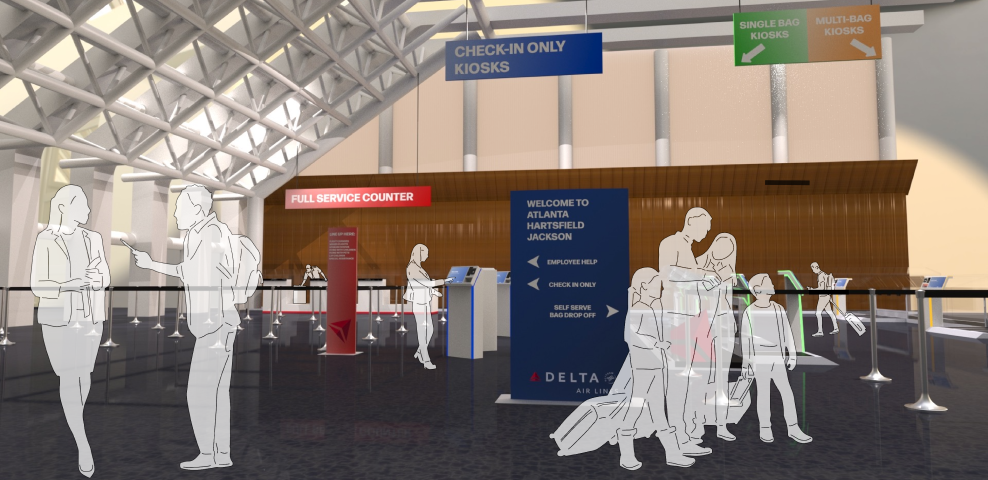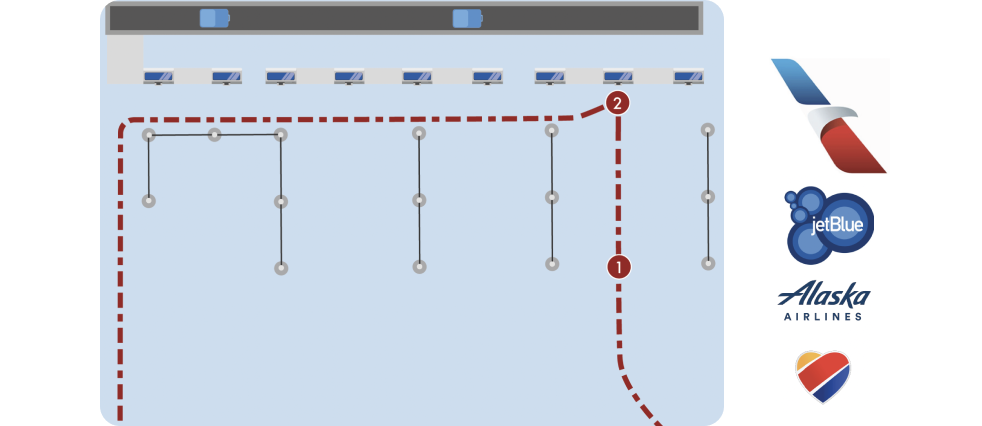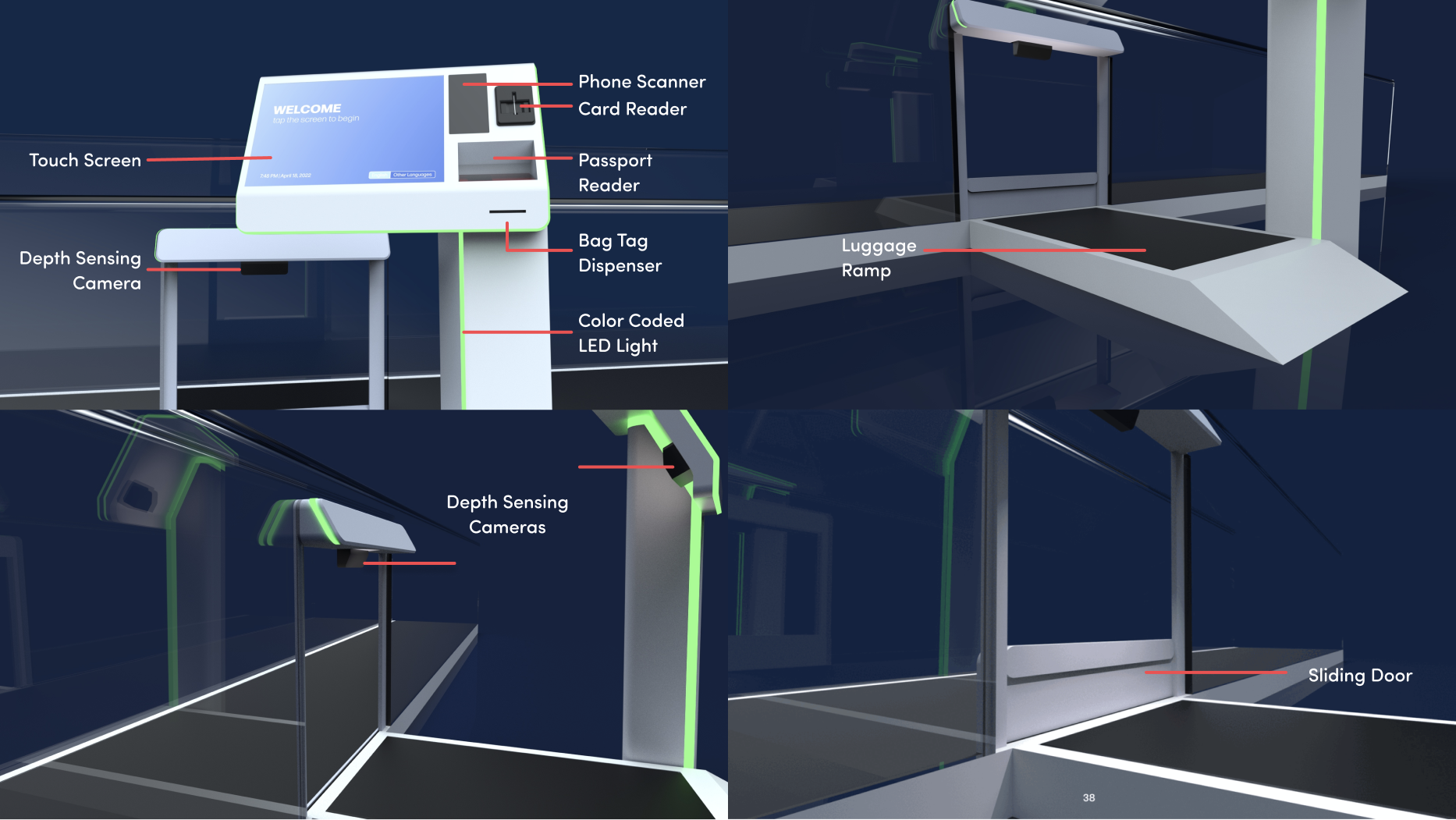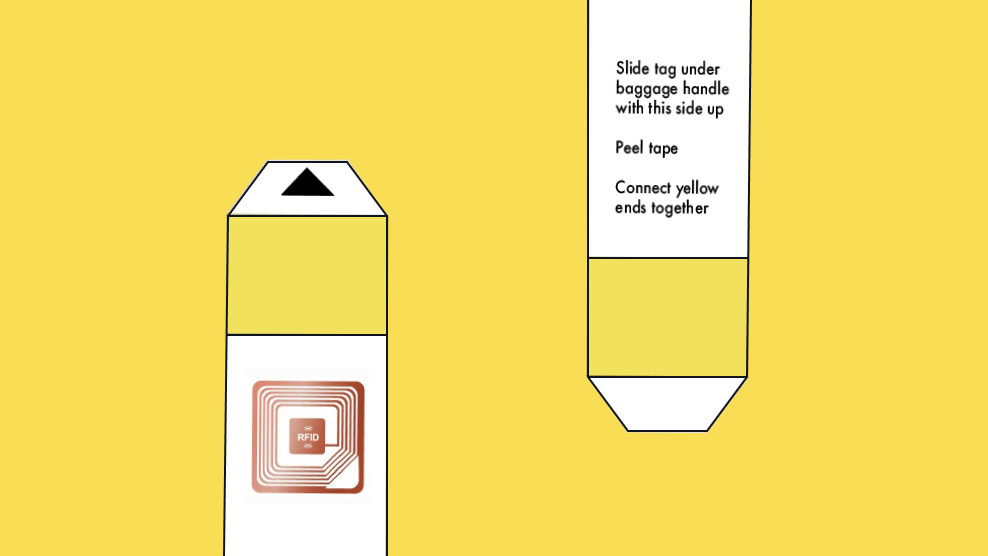Re-inventing the Airport Check-in Experience
Sponsored by Cognizant


Cognizant requested we innovate on an aspect of the airport/flying experience- my team and I choose to look into the check-in experience. We began our research by asking the following:
How could an airport check-in experience be improved with innovative technologies?
How can staff interact effectively with passengers?
Our team did a quick sweep of published airport check-in statistics and found the following to be the most insightful. We found the majority of passengers use online check-in and do not use self-service bag tag and drop services.
Based on our literature review and initial research, our team found the following areas may provide the most opportunities for innovation.
Through our own experiences and research, our team constructed the following flow model for airline check-in to provide a baseline for our research.

Our team deduced that while certain check-in methods allow users to plan and skip the line, they require the use of personal technology. The remaining methods provide users for in-the-moment access but at the cost of time.
Through 5 distinct visits at the Atlanta Hartsfield-Jackson airport, our team observed the following activities, environments, interactions, objects, and users.

Different airlines had different floor plans for check-in. The differences could be a result of a variety of factors, including which airlines considered the Atlanta airport a main hub. Regardless, we took note of the differences in each process to help build our understanding and context.




Our team observed the following behaviors at the airport. In addition, we interviewed two Delta check-in agents who validated that they dealt with these behaviors on a daily basis.
Confusion
when deciding which check-in line to join
Panic
about missing documentation
Annoyance
at baggage drop off lines
Intimidation and unfamiliarity
with self-service kiosk
Embarassment
about holding up lines due to missing documentation, overweight bags, or misbehaving children
Our team sent out a survey of 20 questions (a combination of both qualitative and quantitative) to peers, family and friends, and SMEs. We received 43 responses. The survey further validated the behaviors we observed and illuminated that travelers were guided by three main emotions when checking-in during travel.
Given the vast variety in demographics who travel, our team found that travelers were better sorted into different types of mindsets. These mindsets were created from the research we had collected and observed and acted as our personas for this project.
Based on our research and findings, our team created goals that our proposed solution should meet. Our team decided to focus on creating a design solution for the users who would interact with the physical check-in system at the airport in some capacity.
Given the physical nature of our solution, our team focused on generating baggage drop and wayfinding concepts.

After rounds of sketching, iteration, and critique, our team finalized our initial concept made of three major components. We observed that guests who needed to physically check-in most often had baggage to drop. Therefore, our solution focused on this aspect of the flow.




Although every airline may have different space allocations, our team wanted to create an ideal system in which would best serve the needs each traveler mindset.
The Help Seeker
would have easy access to a help desk to receive the needed support.
The Planner and The Independent
could best serve their needs with the self-serve bag drop or check-in kiosk depending on their circumstance. The Planner would know which solution they needed in-advance and the independent would quickly figure which meets their needs without agent assistance.
The Last Minute
could use any section depending on which has the shortest line for their needs.

Our team recreated our floor plan in a atrium. We recruited participants and gave them each scenarios to enact to understand what effect of way-finding and traffic would have on our flow.


After many rounds of sketching and mini model-building, our team finalized two kiosk forms and made life-size models. We ran 5 test cycles. We printed our UI interfaces and observed users following the instructions to check-in a bag without any assistance.




We created 4 bag tag variations and had testers attempt to fix them on luggage without any instruction.

Based on our initial research, ideation, and testing, our team finalized a final self-serve bag drop design. The kiosk has a variation for users with few luggage to check and another variation for users traveling with many luggage for maximum efficiency. This bag drop kiosk serves to check-in a user and their baggage without agent assistance.


Based on our initial research, ideation, and testing, our team finalized a final bag tag design.


Based on our initial research, ideation, and testing, our team finalized a final system design complete with wayfinding. The large, strategically placed signs utilize color-coding with each section for greater clarity. We tested and validated the spacial layout by walking through the 3D model in VR.

A walkthrough example of how one traveler uses our self-check in system with luggage.
We created a mini model complete with 3D printed help desks, check-in kiosks, single and multi bag drop kiosks and luggage. We soldered a color-coded LED system to indicate wayfinding and the difference between each check-in concept.


This project was challenging due to the scope and tenacity on which we took on - yet it was incredibly rewarding. I am incredibly grateful for a fantastic project teammates - Heather, Janie, and Kareen. We were advised by Cognizant employees and our professor Noah Posner. It was their expertise that guided this project into one that realistically and effectively tackled the challenges many travelers face while having to physically check-in.
Our project was incredibly well received and we were a featured project in Georgia Tech’s launchpad showcase. As of the time of writing, our physical model is still on display at the Georgia Tech College of Design, more than 2 years after conception.